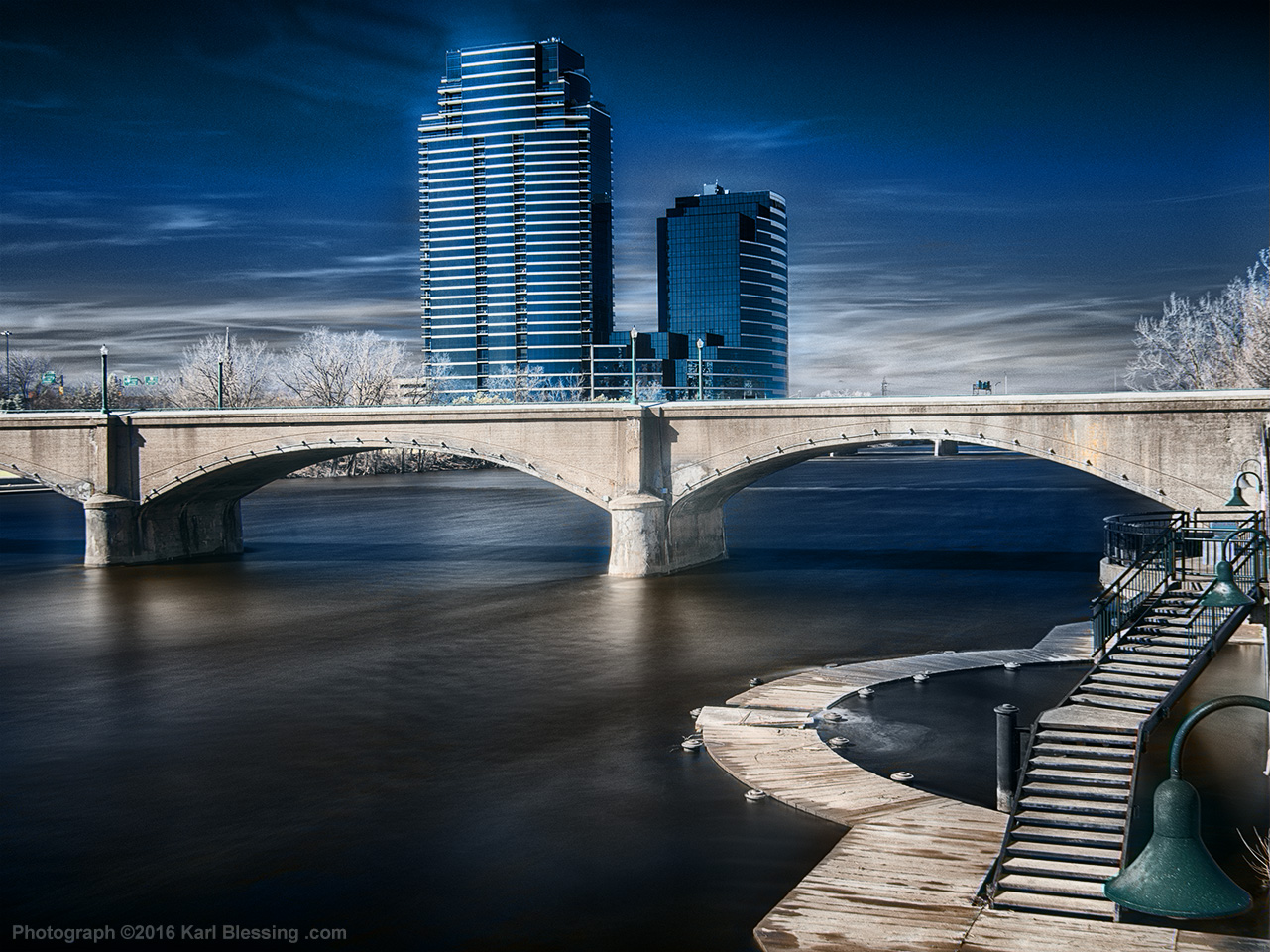I just had to try this. For normal shooting I use a Leica Monochrom, so for the last year or so I have lived a life of black & white. And with the Leica MM I have to use glass filters to change tonality of my images. I wanted to try a similar approach with my trusted Q7.
It all started when I found out my car had a secret compartment that could house my complete Pentax Q system, and that I could set the Q7 to do BW images in RAW, I got very interested in this camera again. (The images are color in Adobe Camera Raw, but they are BW on the screen and in play back mode). I also found out that crop mode 2:3 worked with the RAW files, so that I could have the same ratio as my other camera through the whole PP workflow. All this means I now have a "mini Leica MM" outfit with me wherever I go. Great!
But how about using glass filters? I know the convention that says there is no point in using a glass filter in front of a bayer sensor, because of adjustments you can do in PP. But this is not true for Foveon sensors or the Leica MM. Another thing that bothered me was the exposure. If I use a B+W 091 red filter that require 3-4 stops (facor x8) more light, how can this be compensated in PP without resulting in more noise? If you reduce the red and blue channels and raise the red cannel with 100% you get more noise. Yes? I had to test it on the Q7! So I used the 091 filter, and then I took the same image without filter, and adjusted the tones in ACR to match the red filtered one. I left the sun lit snow as white in both images. The difference was dramatic! The PP adjusted image had tons more noise. The glass filtered image also had noise, but far less. I decided to take this a step further, and did a stack of 4 images with glass filter to simulate a pixel shift image (or a dedicated BW sensor), and got a very detailed, almost noise free red filter image.
The image I have posted shows from left to right, the red filter image, the pixel-shift simulation, and then the PP channel mixed image. What a difference indeed! Now, what if Pentax made a Q with pixel shift, or a dedicated BW sensor? Well this is the quality you could expect. I'm very happy with my new car setup, and I'm not giving up the Q ever. I know the differences will be much less significant with a yellow, orange, green or blue filter, but the proof of concept still stands. The crops should be 100%, but the down-size thingy on this forum makes them more like 50%. Cheers!


 Similar Threads
Similar Threads 





 Do not use time lapse or remote release, but a finger on the shutter, and take 4 images. This will cause the camera to move a tiny bit from frame to frame, and that is important. (A too steady tripod and better technique will not cause the frames to move enough to adjust them properly later). Sharpen the 4 images a bit too much, and enlarge them 400% (8000x6000). When you stack them together you can move them manually with great precision in Photoshop because of the large size of the files. (Normal auto-stacking for noise reduction does not have to be so precise, and isn't). Scale down to 100%, sharpen some more, and voila! The file have the crispyness of a dedicated BW sensor. The files from the Q7 rivals the pixel clarity of a Sigma Merrill or the Leica MM up to 66,7% enlargement. At 100% I can tell the difference. This is as close as I get. Further stacking reduces the noise, but the resolution suffers a bit. I'll say no more than 5 images in the stack. 4 is better. For noise reduction I'll go for 4 stacks of 4 images on the Q. The sensor is tiny and has a lot of noise. The resolution power of the sensor is however very great, and the tiny lenses with thin lens elements helps a lot. Geometry is actually on our side this time. Proper PP skills can give very detailed images indeed.
Do not use time lapse or remote release, but a finger on the shutter, and take 4 images. This will cause the camera to move a tiny bit from frame to frame, and that is important. (A too steady tripod and better technique will not cause the frames to move enough to adjust them properly later). Sharpen the 4 images a bit too much, and enlarge them 400% (8000x6000). When you stack them together you can move them manually with great precision in Photoshop because of the large size of the files. (Normal auto-stacking for noise reduction does not have to be so precise, and isn't). Scale down to 100%, sharpen some more, and voila! The file have the crispyness of a dedicated BW sensor. The files from the Q7 rivals the pixel clarity of a Sigma Merrill or the Leica MM up to 66,7% enlargement. At 100% I can tell the difference. This is as close as I get. Further stacking reduces the noise, but the resolution suffers a bit. I'll say no more than 5 images in the stack. 4 is better. For noise reduction I'll go for 4 stacks of 4 images on the Q. The sensor is tiny and has a lot of noise. The resolution power of the sensor is however very great, and the tiny lenses with thin lens elements helps a lot. Geometry is actually on our side this time. Proper PP skills can give very detailed images indeed.















